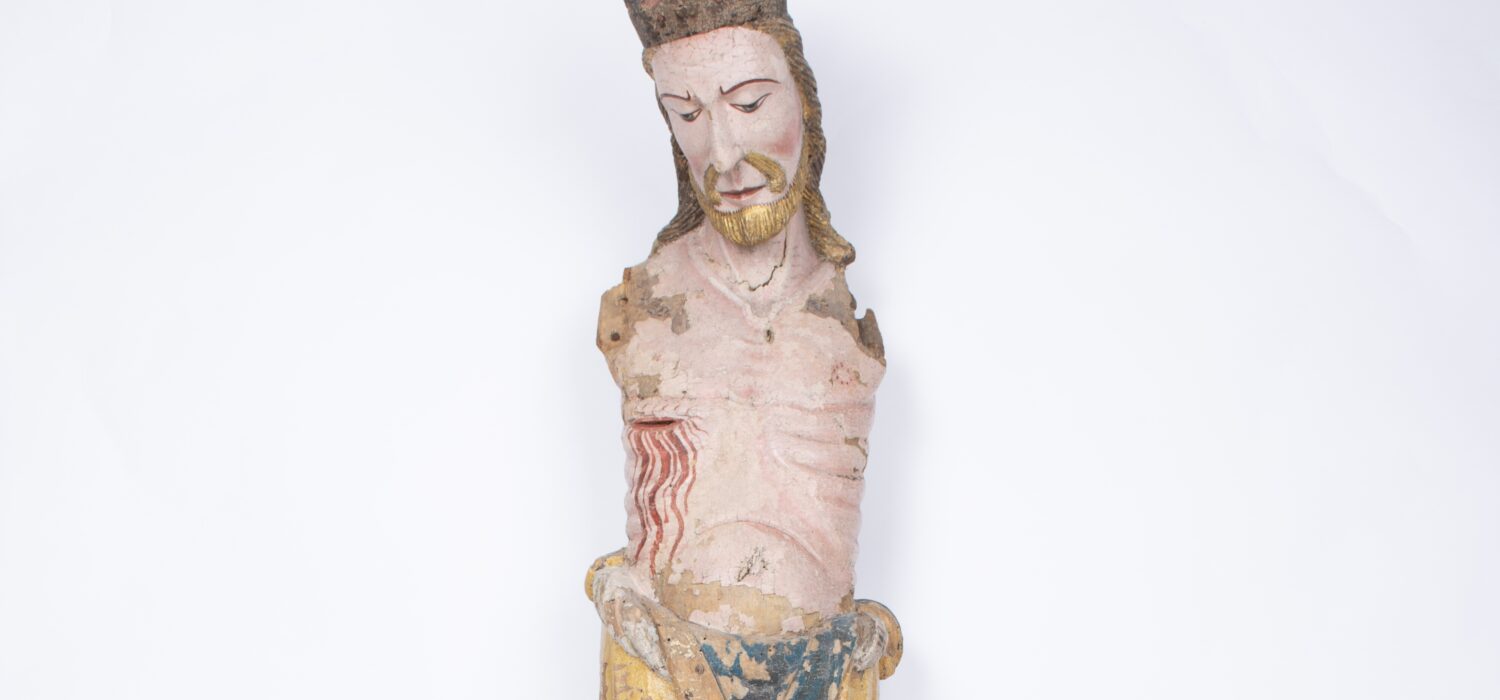Fra seljetre til helligdom
Scroll down for English
Fra seljetre til helligdom
Skulpturen av Jesus på korset, også kalt Årdalskrusifikset, regnes som et av de vakreste kunstverkene fra middelalderens Rogaland. Armene på skulpturen og korset det har hengt på, er gått tapt.
Krusifikset er fra tidlig på 1200-tallet og ble skåret ut av stammen til et seljetre. Opprinnelig hang det i middelalderkirken i Årdal i Ryfylke, og senere i gamle Årdal kirke, som ble bygget på 1600-tallet. I middelalderen var Årdal en sentral del av Stavangers omland, ca. fire mil i luftlinje fra det kirkelige hovedsetet i Stavanger.
Krusifikset kan ha blitt laget i Stavanger, hvor det er et blomstrende håndverksmiljø i den samme perioden. Årdalskrusifikset er sjeldent og særlig verdifullt fordi det fremstiller Jesus med kongekrone og parallelle bein (romansk stil) – ikke med tornekrone og korslagte bein (gotisk stil), som har vært vanlig fra 1200tallet og helt fram til i dag.
---
From goat willow to a sacred object
This sculpture of the crucified Jesus, also known as the Årdal crucifix, is regarded as one of the most beautiful works of medieval art from Rogaland. Jesus’ arms, and the cross on which the sculpture was hanging, have been lost. The crucifix dates from the early 13th century and was carved from the trunk of a goat willow. It was originally hung in the medieval church at Årdal in Ryfylke and is now incorporated in the new church built in the 17th century. In medieval times, Årdal was an important center in the Stavanger region. It is located approx. 40 kilometres as the crow flies from the ecclesiastical seat in Stavanger.
The crucifix may have been carved in Stavanger, where a thriving artisan community flourished during the same period. The Årdal crucifix is rare and particularly valuable because it shows Jesus carved in the Romanesque style with a kingly crown and parallel legs, in contrast to the Gothic style, without a crown of thorns and with crossed legs, which has been common from the 13th century to the present day.
